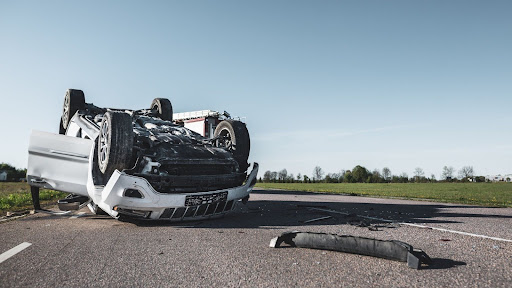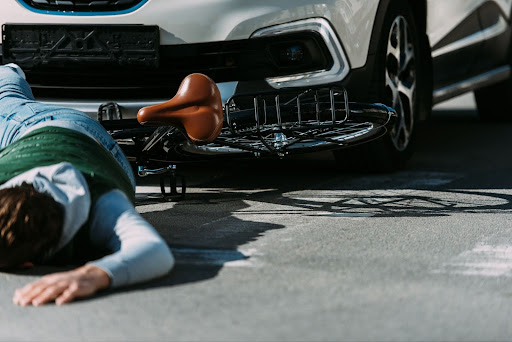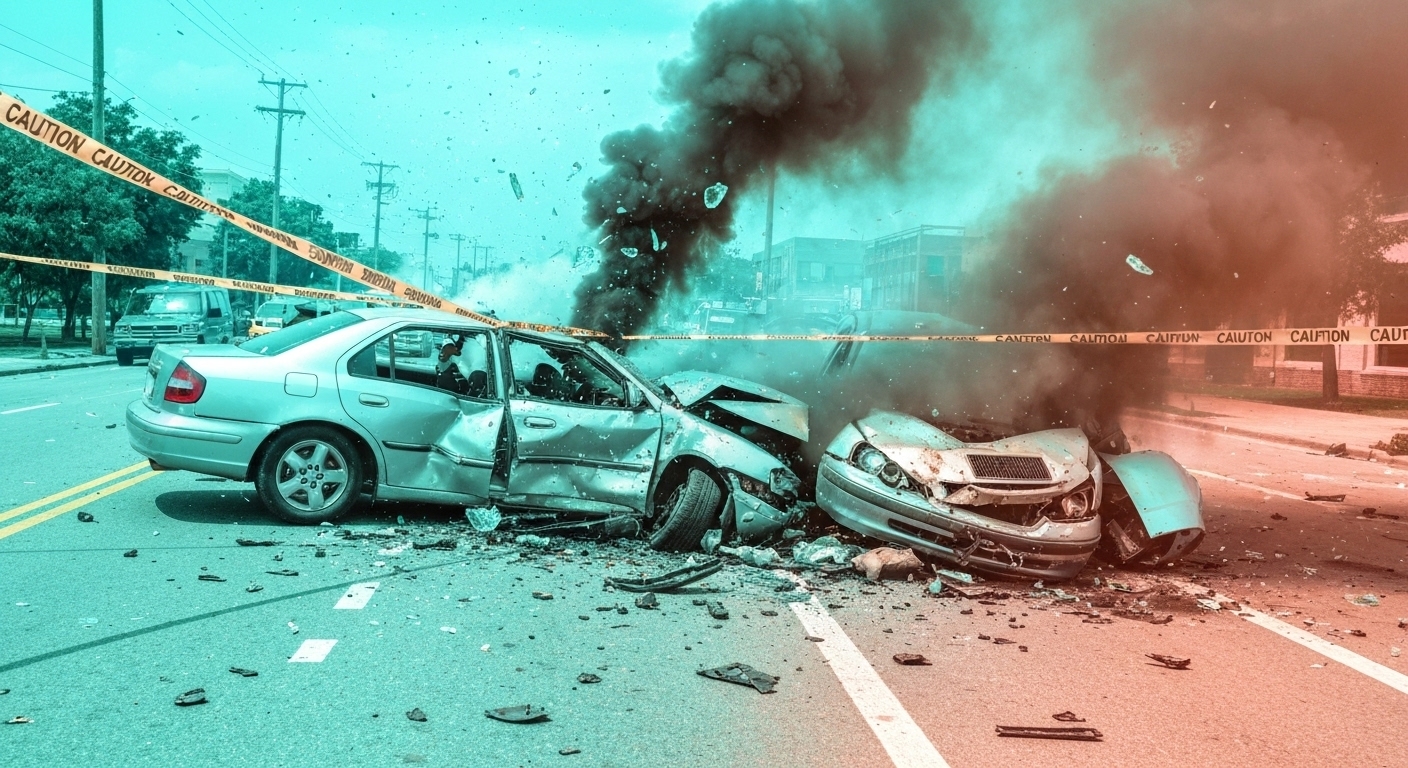Rollover Accidents Are Among the Most Deadly
A rollover accident is one of the most violent and devastating types of crashes. While they account for only about 3% of all crashes, they are responsible for nearly ⅓ of all passenger vehicle fatalities, according to the National Highway Traffic Safety Administration (https://www.nhtsa.gov/sites/nhtsa.gov/files/811435.pdf)
The impact, the vehicle’s unpredictable motion, and the likelihood of ejection make these accidents extremely dangerous.
If you or someone you love has been involved in a rollover accident, you know how life-altering the consequences can be. Serious injuries, high medical costs, and legal battles often follow. Knowing what causes these accidents and how liability works can help you understand your rights. If you need legal help, Lowe Law Group is here to fight for you.
[lowe_cta]
How Rollover Accidents Differ from Other Car Accidents
Most car accidents involve frontal or rear-end impacts. Rollover crashes, however, involve a vehicle flipping onto its side or roof, often multiple times. These accidents are more likely to result in severe trauma because of the violent forces at play.
Rollover crashes typically involve:
- Higher fatality rates compared to other crashes
- Greater risk of ejection, especially when seat belts aren’t used
- Roof crush injuries that can cause spinal cord or brain damage
- More extensive vehicle damage, often leading to total loss
The physics of a rollover make these crashes especially dangerous. The force of the roll can throw occupants into hard surfaces, cause limb entrapment, or result in direct roof impact. Unlike other types of collisions, rollovers can involve multiple points of impact, increasing the risk of catastrophic injury.
What Can Cause Rollover Accidents?
Many factors contribute to rollover accidents. While some are related to driver behavior, others stem from vehicle design or road conditions.
Speeding and Sudden Maneuvers
According to the NHTSA, nearly 71% of fatal rollovers occur in areas where the speed limit is 55 mph or higher (https://crashstats.nhtsa.dot.gov/Api/Public/ViewPublication/809438). High speeds make vehicles unstable, and sudden turns or overcorrections can cause a loss of control. Many rollover crashes happen when a driver swerves suddenly to avoid an obstacle.
Top-Heavy Vehicles
SUVs, pickup trucks, and vans are more prone to rollovers due to their high center of gravity. The taller a vehicle is, the more likely it is to tip over in a sharp turn or collision. While modern stability control systems help, these vehicles still carry an increased risk.
Road Conditions
Poorly maintained roads, potholes, uneven pavement, and soft road shoulders can all trigger rollovers. Rural roads, where speed limits are high and barriers are minimal, see more rollover crashes than urban areas.
Tire Blowouts
A sudden tire failure can make a vehicle unstable, especially at highway speeds. If a driver loses control due to a blowout, the car can roll, especially if the driver reacts by jerking the wheel or braking too hard.
Alcohol and Distracted Driving
Nearly 50% of all fatal rollover crashes involve alcohol (https://crashstats.nhtsa.dot.gov/Api/Public/ViewPublication/809438 ). Impaired drivers have slower reaction times and poor judgment, making them more likely to overcorrect or lose control. Distracted driving—such as texting or adjusting the radio—can also lead to sudden, dangerous maneuvers.
Injury Characteristics in Car Rollover Accidents
Because of the violent nature of rollovers, injuries tend to be severe. The most common injuries include:
Head and Brain Injuries
When a vehicle flips, occupants’ heads often hit hard surfaces inside the car. If the roof collapses, it can cause skull fractures, traumatic brain injuries (TBI), or concussions. Even if airbags deploy, the risk of brain injury remains high.
Spinal Cord Damage
The twisting and impact forces in rollovers often result in spinal injuries. Victims may suffer herniated discs, fractured vertebrae, or even paralysis. Recovery from spinal cord injuries is often long-term, requiring extensive medical care and rehabilitation.
Broken Bones
Arms and legs can get trapped between seats or doors, leading to fractures. If an occupant is ejected, the force of hitting the ground or another object can shatter bones. Some fractures may require surgeries, metal implants, or long-term physical therapy.
Internal Organ Damage
Blunt force trauma from the accident can lead to internal bleeding and organ damage. These injuries aren’t always visible immediately but can be life-threatening if untreated. Internal bleeding can cause shock, which may lead to fatalities if not promptly addressed.
Lacerations and Soft Tissue Injuries
Glass and metal debris can cause deep cuts, while violent movement can result in torn ligaments or muscle injuries. Some soft tissue injuries may not heal completely, leading to chronic pain and mobility issues.
Psychological Impact of Rollover Accidents
Beyond physical injuries, rollover accident victims often suffer significant emotional and psychological trauma. Post-traumatic stress disorder (PTSD), anxiety, and depression are common among survivors. Some people experience a fear of driving or nightmares related to the accident. These mental health challenges can require therapy or counseling for recovery.
Liability in Rollover Crashes
Determining fault in a rollover accident is often complex. Liability can fall on multiple parties, including the driver, another motorist, a vehicle manufacturer, or a government entity responsible for road maintenance.
Driver Negligence
If a driver was speeding, intoxicated, or distracted, they might be held responsible. In single-vehicle rollovers, insurers often argue that the driver was at fault, but other factors—like road hazards—could be to blame.
Another Driver’s Actions
A rollover may occur due to another vehicle swerving, stopping abruptly, or forcing a driver off the road. In these cases, the at-fault driver may be liable, even if they didn’t physically collide with the rolled vehicle.
Vehicle Defects
If a car’s design makes it more prone to rollovers, or if a mechanical failure (such as defective brakes or tires) caused the accident, the manufacturer may be held accountable. Investigations into stability control failures or tire recalls could provide evidence for a product liability claim.
Poor Road Conditions
Government agencies responsible for road maintenance can be liable if a poorly maintained road contributed to the accident. Dangerous curves, missing guardrails, or potholes can all increase rollover risks.
How Lowe Law Group Can Help
Rollover accidents often lead to devastating injuries and legal battles. If you or a loved one has been injured in a rollover crash, Lowe Law Group can help you recover compensation for medical bills, lost wages, and pain and suffering. Our team understands the complexities of these cases and will fight for the justice you deserve.
We will investigate every aspect of your case, from accident reports to medical records, to build the strongest claim possible. Our legal team works on a contingency fee basis, meaning you don’t pay unless we win your case.Contact Lowe Law Group today for a free consultation. We’ll evaluate your case, explain your options, and work to hold the responsible parties accountable. Don’t wait—get the legal support you need now.








